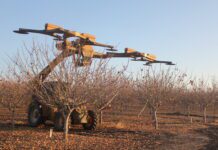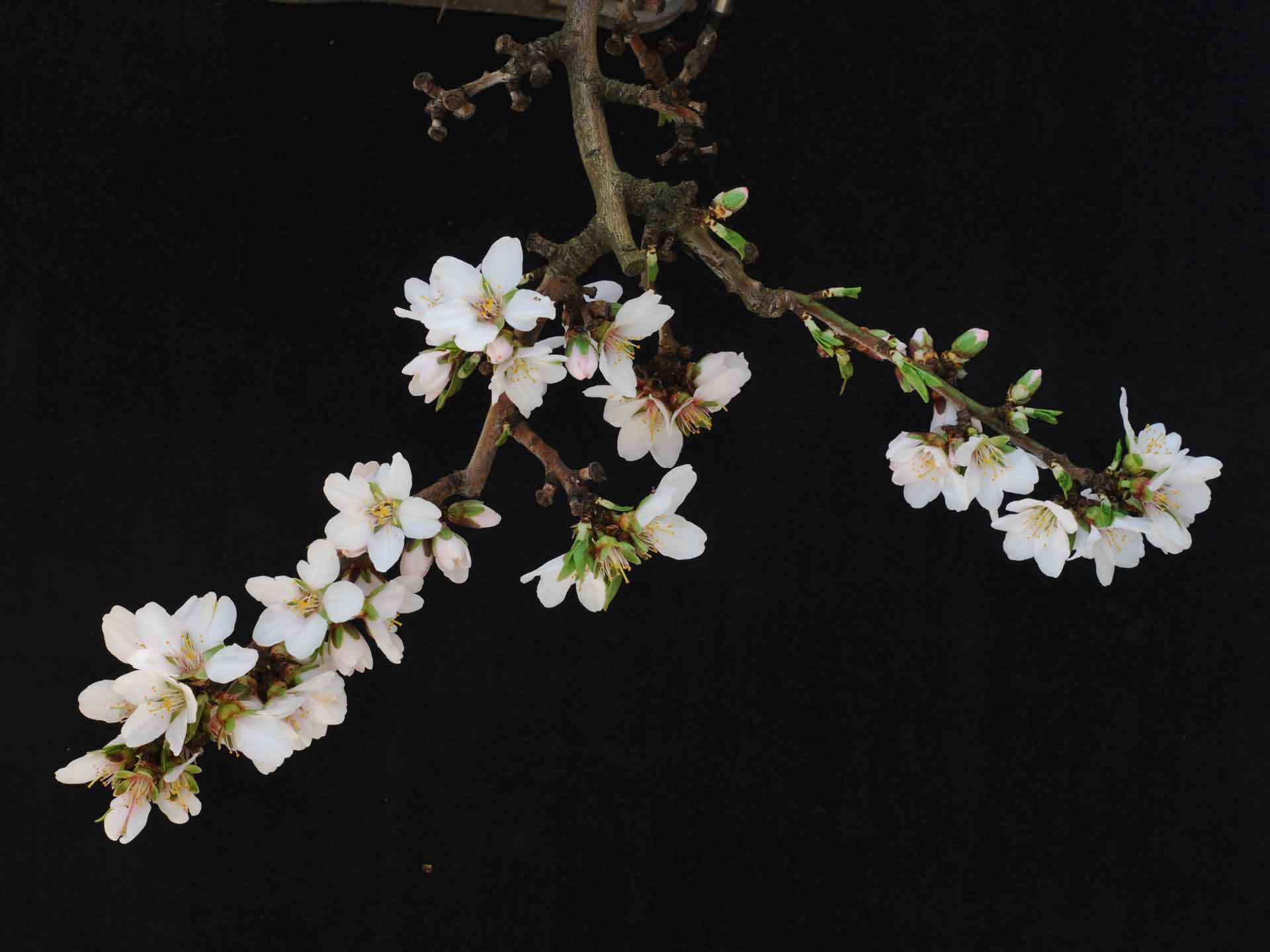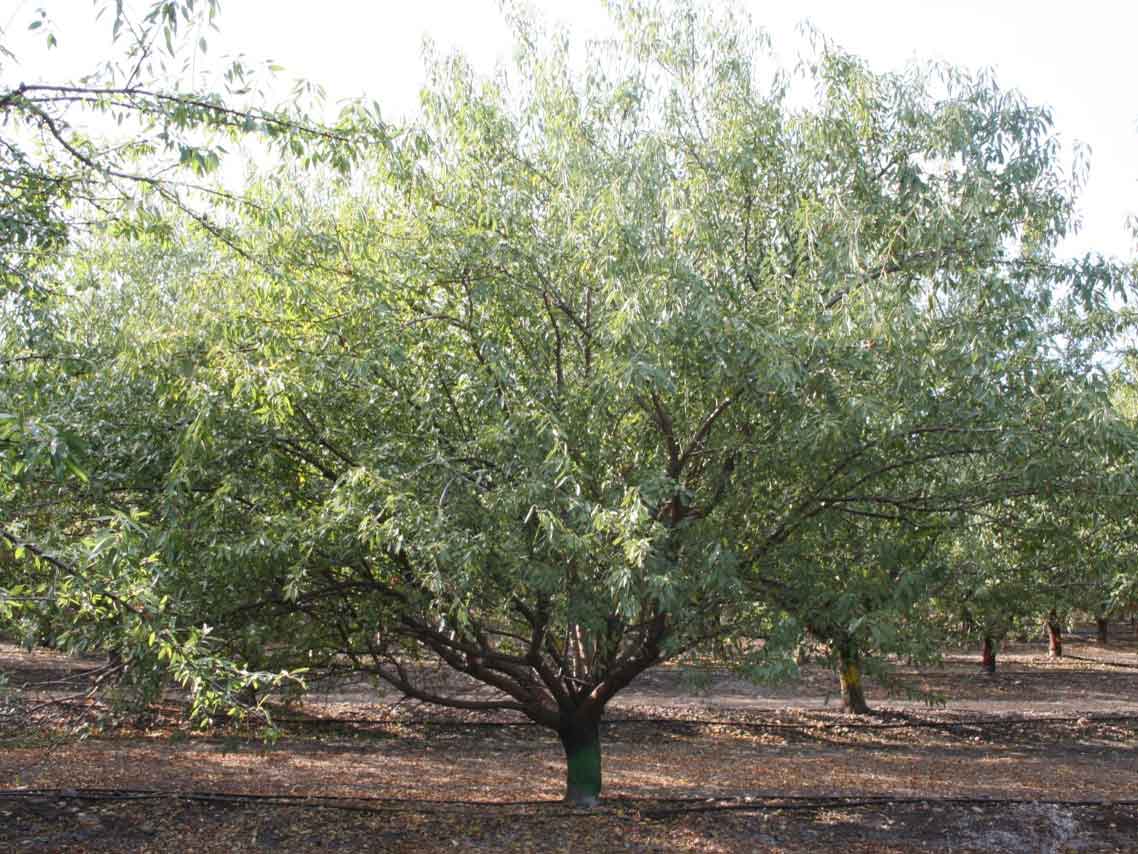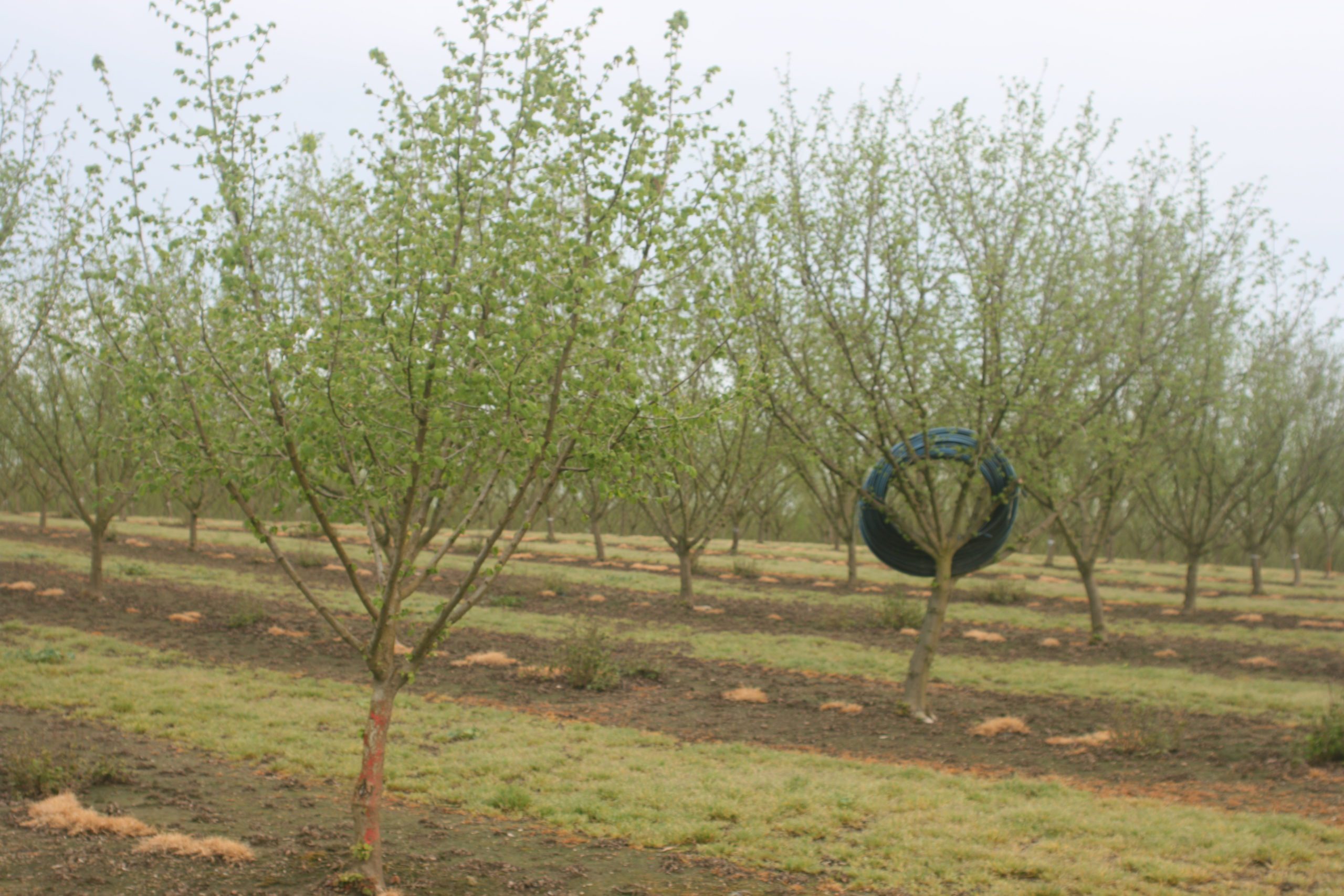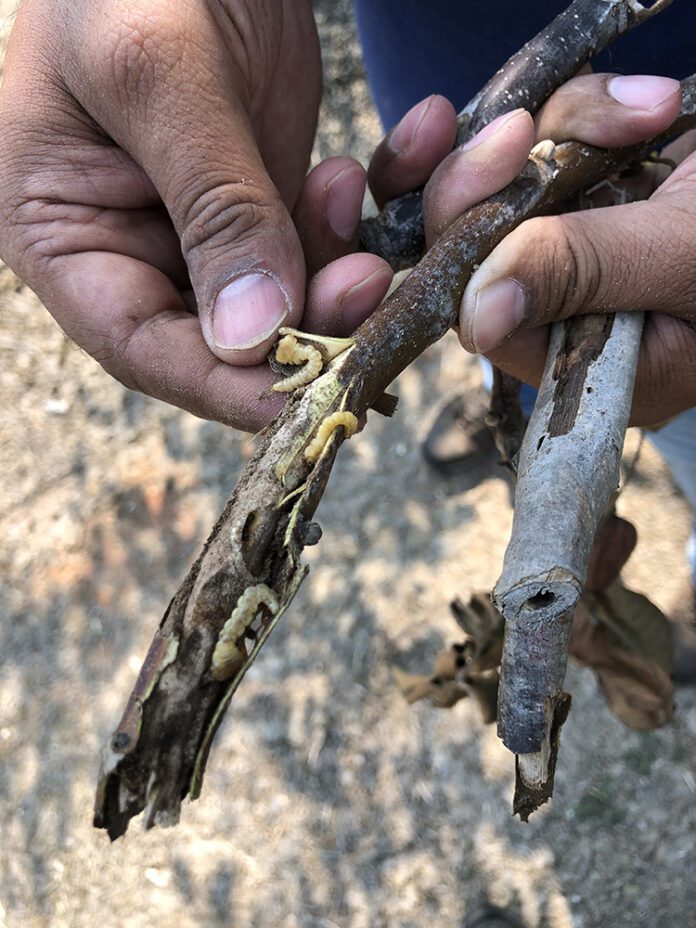
An insect pest that only a few years ago was associated with drought-stressed young trees now poses a real threat to healthy, mature walnut trees. UCCE IPM Advisor Jhalendra Rijal, who has been leading the development of integrated pest management practices for Pacific flatheaded borer (PFB) since 2018, stressed that early detection of infestation in walnuts is key to control and preventing serious tree damage. Subtle background damage may not be obvious early in the infestation.
“I encourage growers to be vigilant and watch for signs of damage,” Rijal said.
Rijal has been leading the most extensive studies of PFB, including identification of the pest and damage, determining the adult emergence timing in California and developing monitoring tools and controls.
He believes that as walnut acreage has expanded to areas of suboptimal environmental conditions for walnuts, more trees are susceptible to PFB infestations. This also applies to orchards that are not being actively farmed. They can become infested while trees are still alive but under water or other stress. Walnut seems to be most susceptible compared to other nut and fruit crops, which can be attacked by PFB occasionally when they are young and have sunburn issues.
PFB is not a new pest in the Central Valley, but growers are now finding infestations in healthy trees. Early detection is key to controlling this pest.
Spotting the Silent Threat
Rijal notes damage from this pest in walnuts is not limited to wounded and sunburned tree branches. Healthy-appearing twigs, branches, limbs and trunks can become infested with PFB. Rijal said high levels of tree damage due to PFB have been found throughout the Central Valley since it was first found as an economic issue in 2018.
“Last year, there was a huge infestation due to the hotter temperatures,” Rijal said. There may be less PFB pressure this year due to a cooler summer, but he is recommending orchard scouting. Growers who found PFB in their orchards last year likely have problems this year too. The best timing for scouting is during the fall and winter.
This wood-boring pest is a member of the Buprestidae family. The name comes from the enlarged and flattened shape just behind the head of the larvae. These beetles produce only one generation per year. The female beetles lay eggs on the wood during the summer. After hatching, the larvae begin to feed on the cambium layer and slowly bore into the pith as they grow. The larvae remain inside throughout the winter before pupating and emerging as adults the next summer.
Stressed trees, due to drought or other environmental conditions, are most likely to become infested by PFB, but Rijal said mature trees can also become infested. Scouting for PFB damage can begin in September, but he said it is easier to see after trees have lost their leaves. Dead or flagged branches can be one sign of infestation. Infestations are also more likely to be found on the south and west sides of the tree due to more sunlight exposure and heat. Pruning wounds, sunburn areas and the graft union should be carefully examined. If a PFB infestation is suspected, he suggested peeling back the bark and looking for feeding tunnels, frass or larvae. Larvae are easier to find early in the fall before they move into heartwood. Later in the fall, where there is PFB feeding, brown-colored sap can be seen on the bark of an infested tree. Small D-shaped exit holes on branches and limbs are another sign of an infestation.
Fighting Back in the Orchard
Although there are a few insecticides shown to reduce the damage in trials when applied during adult emergence and egg-laying timing from mid-June through July, the efficacy of the product may not be obvious in one year, especially when pest pressure is already high. Rijal’s trapping study found red and yellow color traps act as attractants. These traps and insect trap glue can be used for monitoring the presence of PFB during adult flight, which begins in early May and lasts through July, peaking around mid-June in the San Joaquin Valley.
There are cultural practices in the orchard that can reduce PFB numbers. Preventing sunburn on young walnut trees cuts down on openings on the trunks where PFB lays eggs. Rijal recommends painting the tree trunks with white latex paint in the spring for the first two to three years after planting to prevent sunburn, and thereby PFB. Trunk guards can also be used. Visible wounds, cracks or injuries should be checked for presence of PFB larvae. Orchard sanitation consisting of removal of weakened, injured or dead and flagged branches during dormancy is the best way to eliminate overwintered larvae. All wood should be chipped or shredded to kill the larvae. Unfortunately, this process needs to be repeated every year until you feel comfortable with the level of attacks. The key factor is to train the pruning crews so they can identify the infested branches for pruning.

Cecilia Parsons | Associate Editor
Cecilia Parsons has lived in the Central Valley community of Ducor since 1976, covering agriculture for numerous agricultural publications over the years. She has found and nurtured many wonderful and helpful contacts in the ag community, including the UCCE advisors, allowing for news coverage that focuses on the basics of food production.
She is always on the search for new ag topics that can help growers and processors in the San Joaquin Valley improve their bottom line.
In her free time, Cecilia rides her horse, Holly in ranch versatility shows and raises registered Shetland sheep which she exhibits at county and state fairs during the summer.









